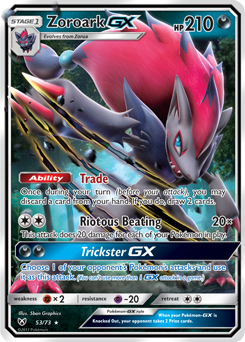The Seviper and the Sandaconda – A Commentary on Play Style
Hey guys, It’s Charlie and I’m excited to be back with another article! I’ve still been taking a nice break from playing recently, which means I didn’t compete in the Players Cup this past weekend. I really enjoyed watching the streams, however, and I learned a lot more about the current format we’re competing in! I’m super excited to make my return to official play as soon as Premier tournaments come back.
Recently, my writing has been focused on improvement and how a player can unlock their full potential. For years, I struggled with improving from a generally strong player into a player that could compete at the highest level; and until recently, I didn’t understand that transformation very well. I just thought playing enough Pokemon immediately did it, but as I’ve read a lot about learning and performance at elite levels recently (quick plug: The Art of Learning by Josh Waitzkin is an amazing book, especially for Pokemon players!). I’ve learned that much of this transformation is deeply rooted in some psychological adjustments I embraced as I matured as a player. These psychological quirks that everyone has manifests in your play style, which defines the conditions and strategic ideas that you most resonate with. In this article, I’ll go in depth on this idea of play style, draw parallels to chess (mostly because there’s no luck involved and there’s enough history), and discuss how some of Pokemon’s all-time greats manifest these ideas to become better (and in some cases worse) players.
Play Style: What Is It?
For a very long time, I didn’t believe in the idea of play style in Pokemon. I originally only thought it could pertain to what decks a player gravitated towards, say control decks, highly aggressive Big Basic decks, mid-range Evolution decks, or anything else. My definition of play style was basically just examples such as: Tord plays Zoroark-GX decks, so his play style is defined by Zoroark. Rahul Reddy likes Vespiquen, so I guess his play style is defined by Revenge-type attacks. This view was incredibly close-minded; there is much more behind these deck choices to uncover and a better definition has much less to do with a player’s deck choices.

My new definition of play style stems from one’s natural inclination towards certain ideas and how that manifests on the Pokemon table. Much of this can be seen in one’s personality; the best players let their personality manifest itself in their play. The best high-energy Pokemon players play high-energy games, while the most calm and collected players play more laid-back marathons. Play style is simply how one’s personality shows in their games of Pokemon.
Unlike chess, Pokemon has two different mediums through which you can express your play style: your deck choice and your play itself. The game’s very best players strike a fine balance between these and know how to recreate the conditions under which their play style flourishes consistently. While there is an endless spectrum of different play styles, I’ve defined a few general archetypes and how they manifest in a player’s deck choices, their play, and even their emotions away from the table.
The Viper and the Anaconda: A Chess Parallel
This concludes the public portion of this article.
If you'd like to continue reading, consider purchasing a PokeBeach premium membership! If you're not completely satisfied with your membership, you can request a full refund within 30 days.
Each week we post high-quality content from some of the game's top players. Our article program isn't a corporate operation, advertising front, or for-profit business. We set our prices so that we can pay the game's top players to write the best content for our subscribers. Each article topic is carefully selected, goes through multiple drafts, and is touched up by our editors. We take great pride in our program!

